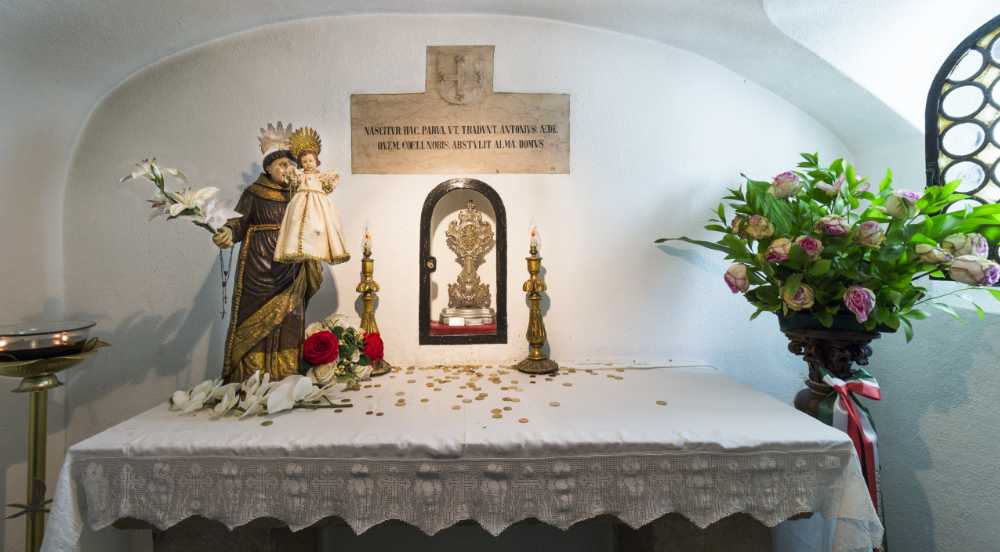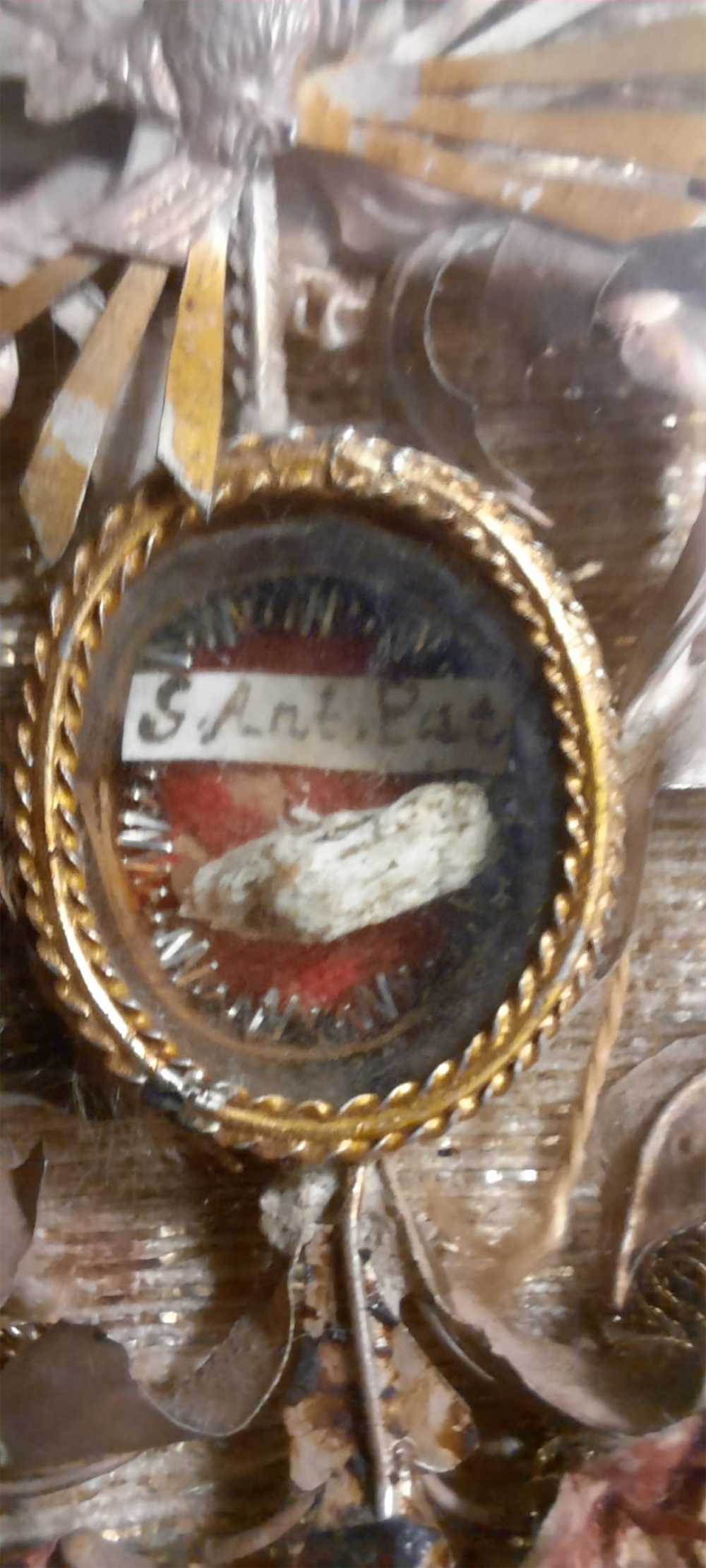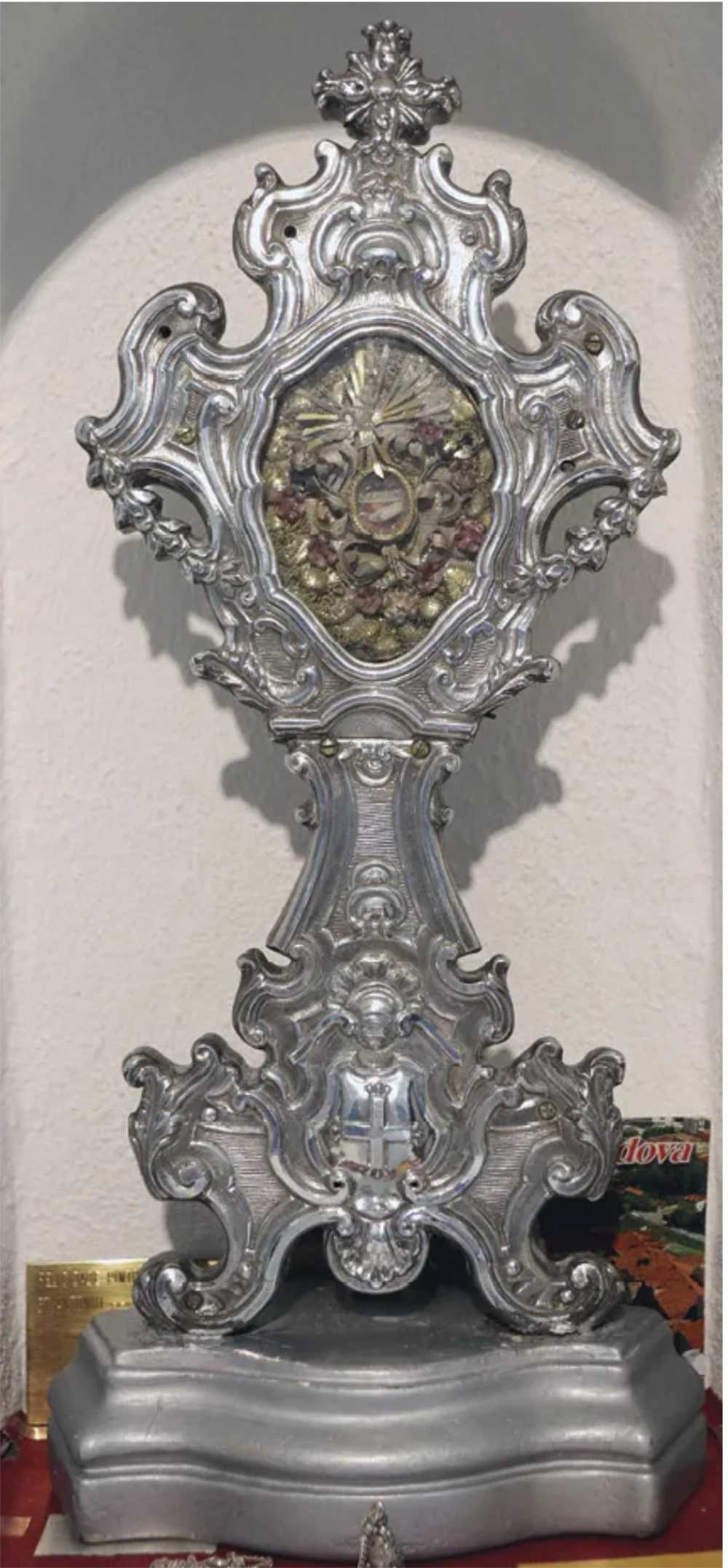CHURCH OF SAINT ANTHONY OF LISBON
Details about the art and birthplace of Saint Anthony


1. Church of St Anthony: history
The famous Church of Saint Anthony, next to the Lisbon Cathedral, is located on the site of the house where Saint Anthony was born and spent his childhood. The front mixes Manueline style with neoclassical Ionic columns on either side of the main entrance. Doctor of the Church, Saint Anthony is the most popular saint in the world, he is secondary patron saint of Portugal and of the patriarchate of Lisbon, as well as the main patron saint of the city of Lisbon where he was born. This continues to be the home of the saint and his many devotees, par excellence, because it was built on the place of his birth.
It is believed that it was around 1337, when the city’s Senate Council began gathering here, in what was then called the Consistorial House of the City of Lisbon.
Most likely a chapel or a simple niche was built first, shortly after the quick canonization of Friar Anthony. Although the first news regarding the chapel only dates back to the beginning of the 15th century, the Lisbon City Council had operated in the Saint Anthony House since 1326, a situation that continued until 1753. In 1431, the Saint Anthony House Church already existed, the date on which Pope Eugene IV, sends a Bull giving power to choose confessors approved by the local Bishop. In 1431, the remains of the mother of Saint Anthony were transferred from the Monastery of Saint Vicente de Fora.
In 1495, King John II ordered the reconstruction of the temple for larger and more dignified dimensions, a campaign that continued under the reign of King Manuel I. Constantly cared for by the city and the monarchs, in the reign of King John V it was destroyed after the earthquake of 1755, saving only the chancel. The new church was built between 1767 and 1812. It was on May 15, 1787, after the earthquake, that the first religious service was held in the current church, which only was completed in 1812.
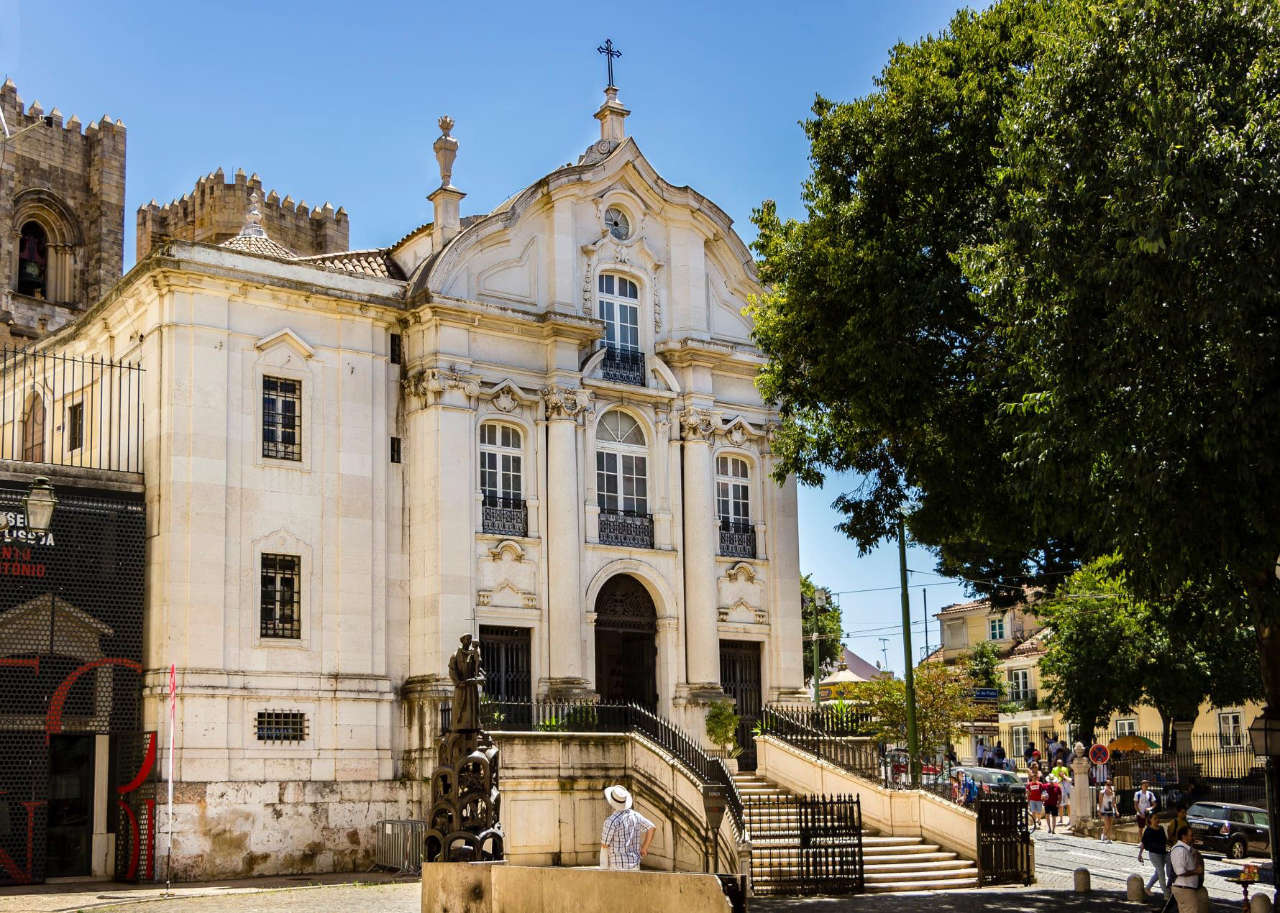

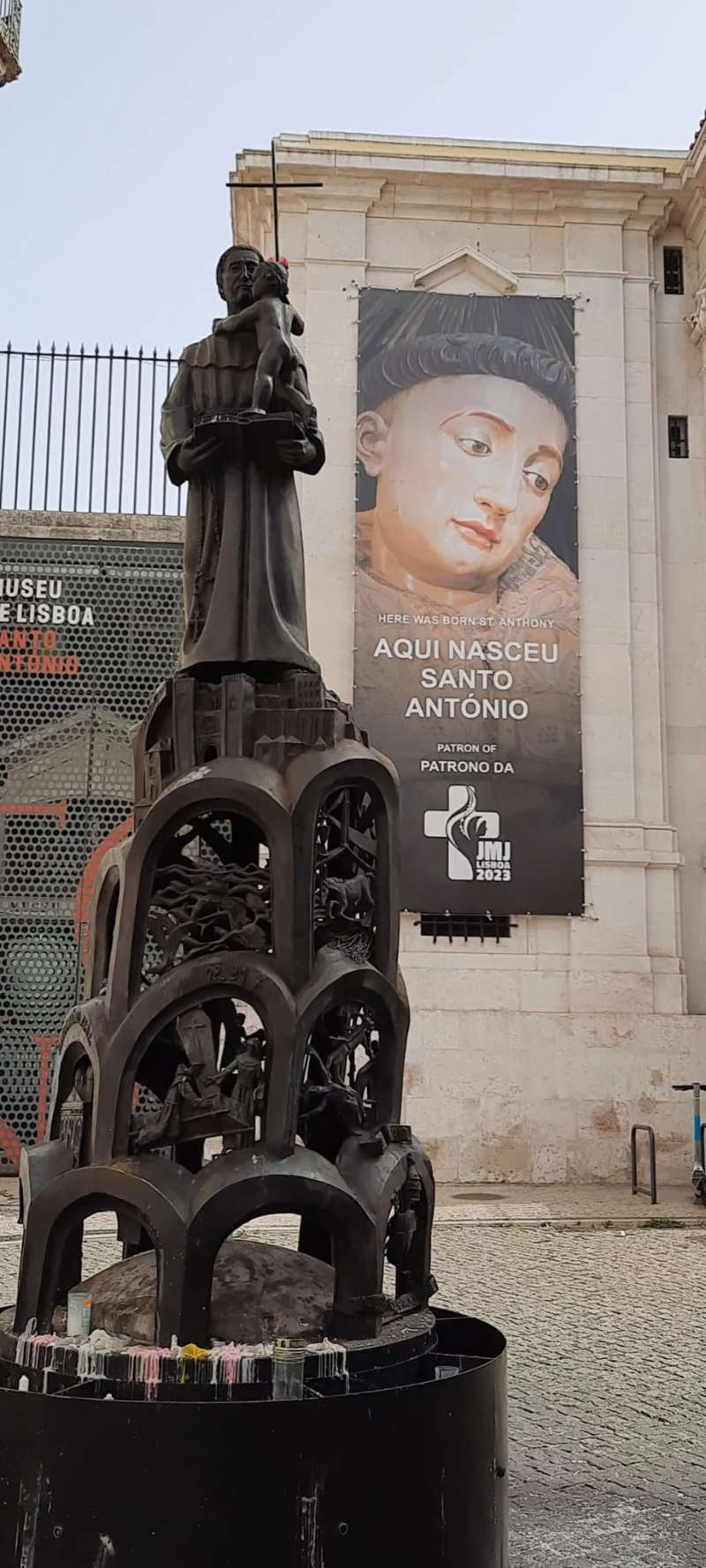

2. Exterior IMAGE OF THE SAINT AND SYMBOLOGY
(in front of the Church)
In the front square, there is an image of the Saint, blessed and inaugurated by Pope Saint John Paul II in 1982, who wanted to come here to pray for personal devotion, where he spoke to the Franciscan Family and to the City Council of Lisbon, city of which the Saint is the main Patron Saint. This workpiece is by Domingos Soares Branco and was restored by him in 2004. The initial project for this Image dates back to 1970. This Image is where pilgrims and visitors place candles to burn in honor of the Saint. Many are also those who throw small coins to the Image, so that they remain in the lap next to the boy or in the hood of the Saint, as a way of asking for a good courtship or a good marriage.
The Image: On the one hand, the statue is a traditional representation of Saint Anthony, dressed in a Franciscan habit, with a Cross and the Bible on which the Child Jesus stands, holding onto the Saint’s shoulder, as if interacting with him, as children often do by extending their arms in a gesture of tenderness and complete trust. In this way, the author shows us the values of life and also of Franciscanism preached by St. Francis and St. Anthony.
3. High Altar
The altarpiece is topped by two volutes on which, parallel to them, two angels rest carrying a crucifix adorned with lilies and a book, attributes of Saint Anthony. The image of Saint Anthony is venerated in the centre of the altarpiece, at the foot of the Eucharistic throne. This image, which withstood the 1755 earthquake, was carved in a single piece of cedar wood, upholstered, and polychromed with floral motifs. It weighs about 300 kilogrammes and measures 1.70 meters, the same height as Saint Anthony’s remains, as confirmed by the fourth exhumation. The images of Saint Vincent and Saint Sebastian are shown on the side in corbels. On the left side of the tabernacle, the bone from Saint Anthony’s left arm is revered. This relic came from the Church of São Roque and was given to this church on June 15, 1951. The painting at the top of the altarpiece, which is credited to Pedro Alexandrino, is also remarkable since it depicts several of Saint Anthony’s miracles, including the healing of the sick and the well-known episode where he preached to the fish.
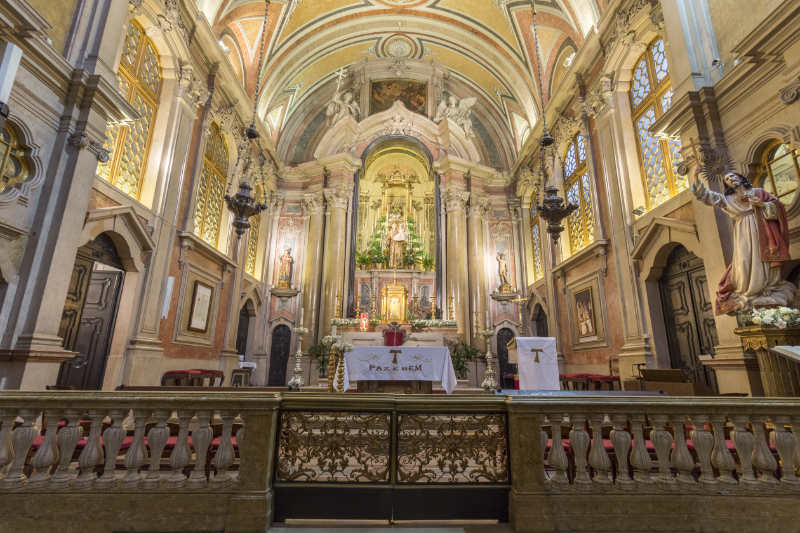

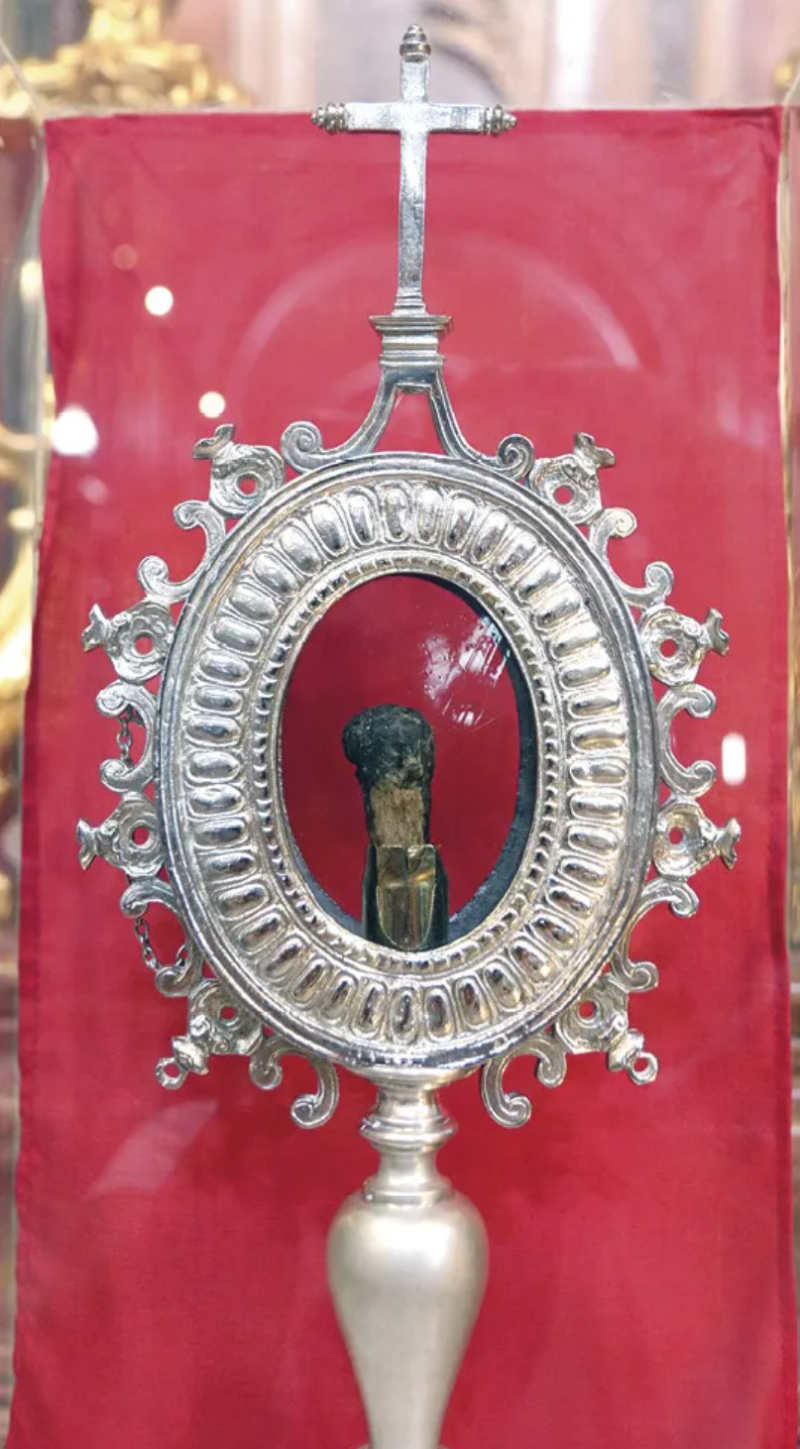


4. Miracle Picture
One of the first paintings of Saint Anthony revered on this altar, known as the Miracle Picture, is referred to as the “true effigy of the Saint.” It shows the saint in his most authentic form. This painting, which is thought to be from the 16th century, is decorated with neoclassical characteristics. Along with the relics, it is the main focus of veneration for devotees, who come here to kiss it or touch it with their hands or with carnations, thus leaving their prayers and gratitude in its presence.
5. Immaculate Conception
The altar is dedicated to the Immaculate Conception, with a late-baroque altarpiece in gilded carving. The Immaculate Conception is depicted in the centre by a Pedro Alexandrino painting, according to Saint John’s description of the Woman in the Book of Revelation, “A great sign appeared in the sky, a woman clothed with the sun, with the moon under her feet, and on her head a crown of twelve stars” (Rev. 12:1-2). On this altar, we highlight the image of St. Joseph holding the Child (20th-century).
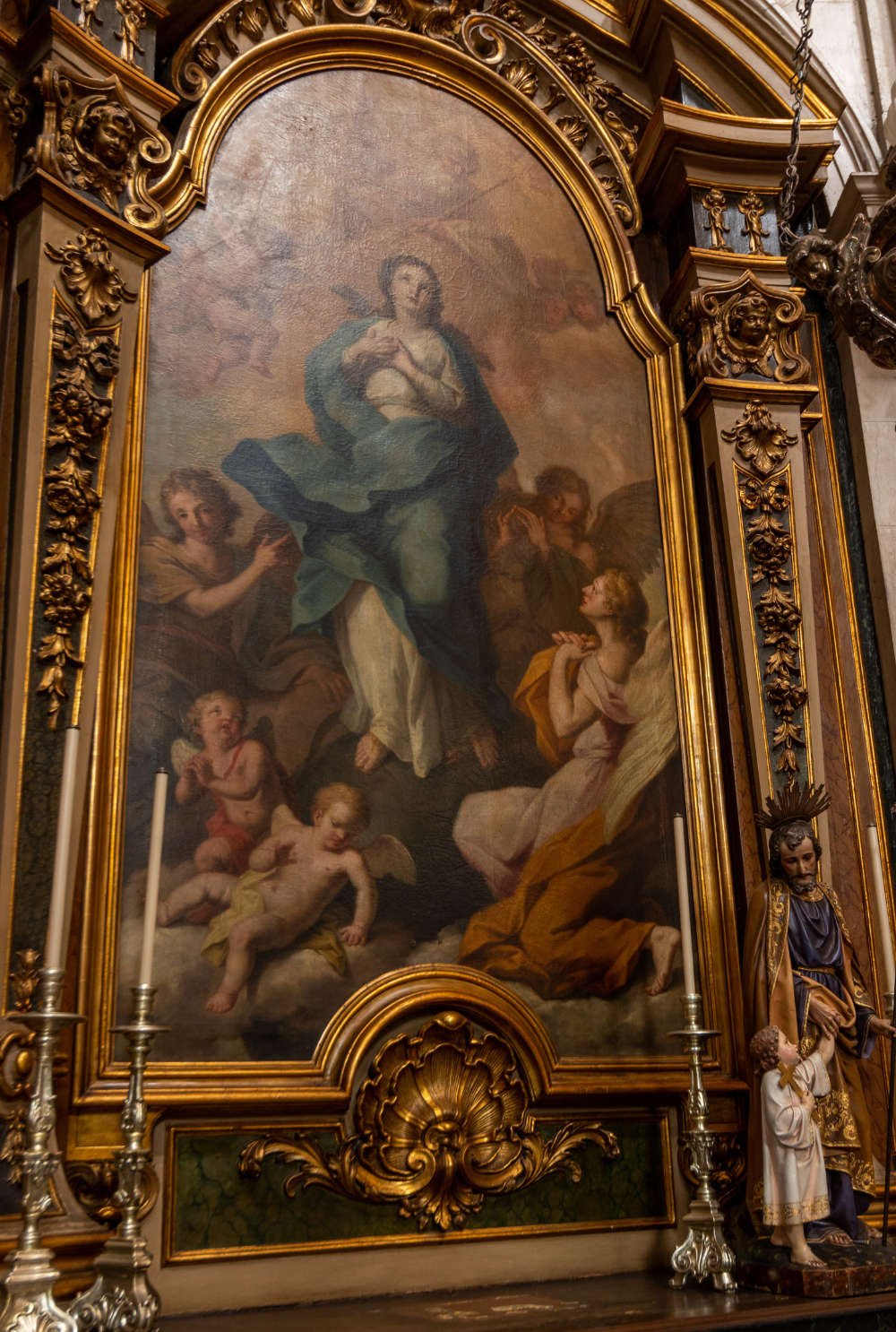

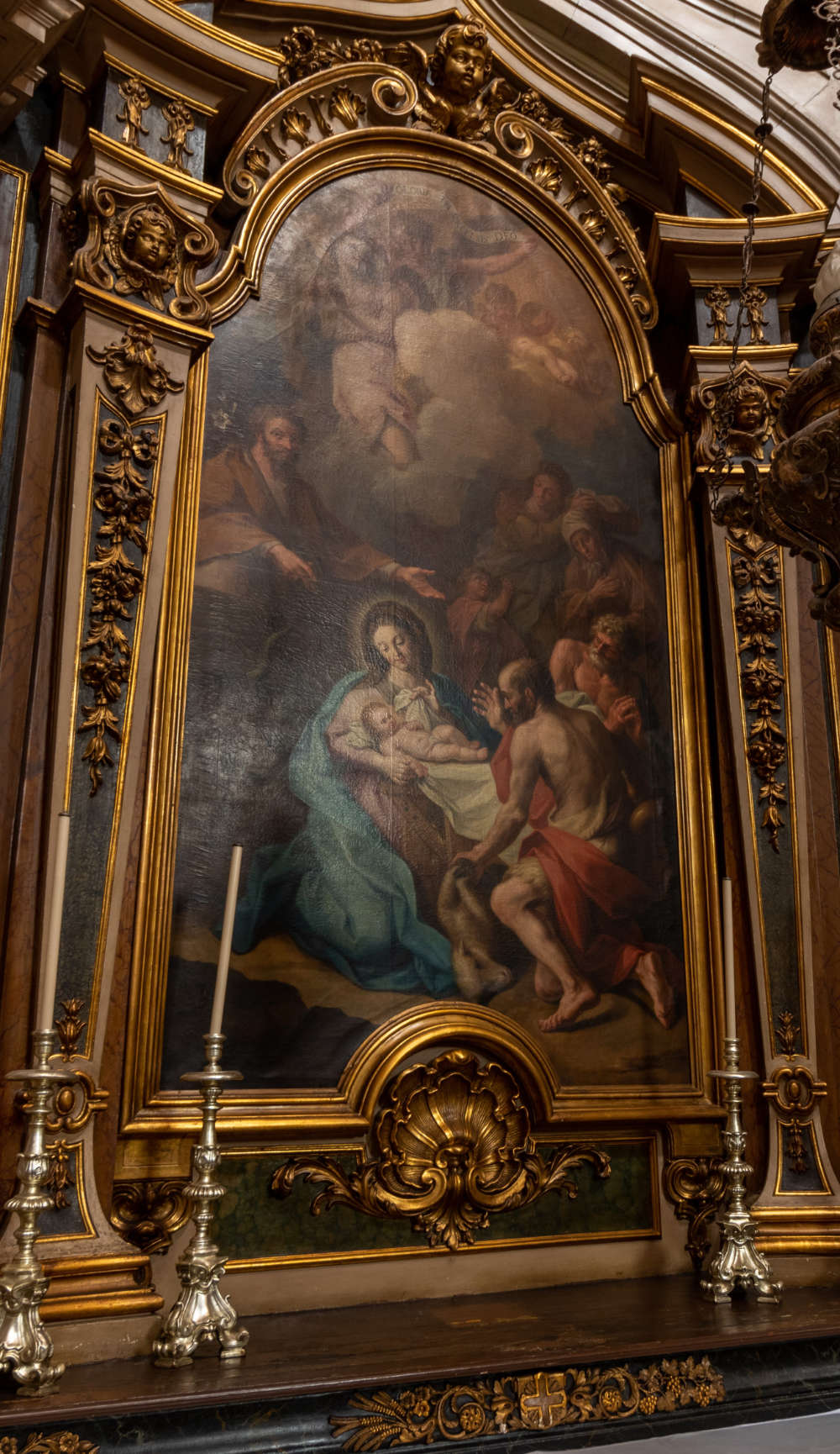

6. Adoration of the Shepherds
17th-century altar in late-Baroque style with gilded carving. The painting by Pedro Alexandrino represents the Adoration of the Shepherds. In the centre of the composition, the Virgin Mary, kneeling in front of the manger, holds the baby Jesus, presenting him to the shepherds, who, after the angels announcement, rushed to adore the Messiah. Saint Joseph is depicted on the left side of the screen, looking directly at the spectator while pointing with his right hand to the Child God and extending his left arm as an invitation for us to enter the picture and adore the Son of God alongside the shepherds. On this altar, we highlight the image of Our Lady of Fátima, which honours the appearances of Our Lady to the three little shepherds in 1917.
7. Our Lady of Sorrows
The altar is dedicated to Our Lady of Sorrows, whose polychrome and gilded wood neoclassical altarpiece features iconographic elements that allude to the Passion of the Lord. The nails of the crucifixion and the crown of thorns may be seen in the upper portion’s centre. Two angels rise to the side, holding symbols of the Passion. On the left side is the rod with the sponge soaked in vinegar that Christ was given to drink, and on the right side is the spear that pierced Him. In the centre of the altarpiece is the image of Our Lady of Sorrows (18th century), which was, at the time, considered one of the most beautiful in Lisbon. This altarpiece has a reliquary altar with the body of Saint Justina, a martyr from the 1st century, offered by Pope Pius VI in September 1777.
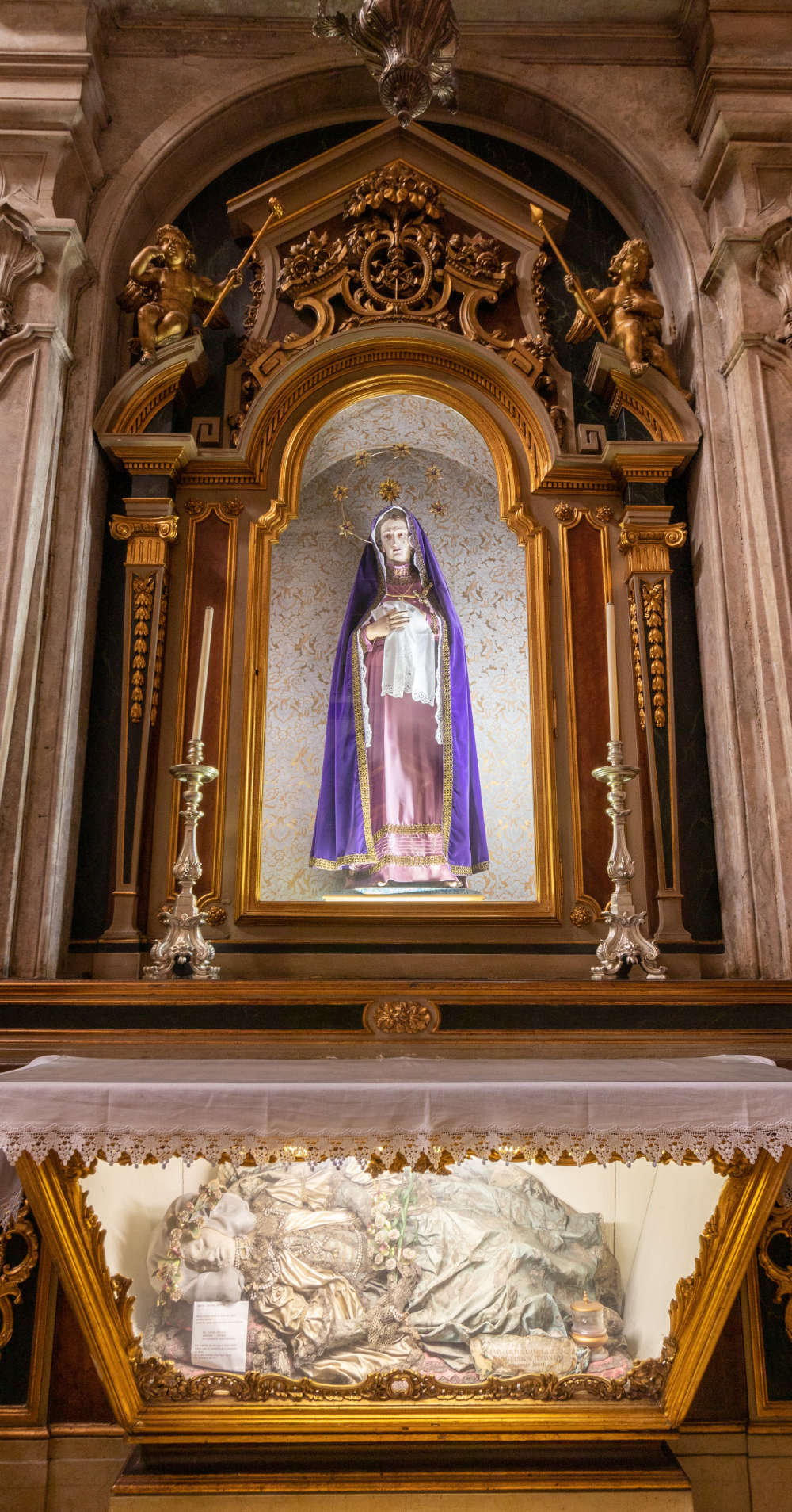

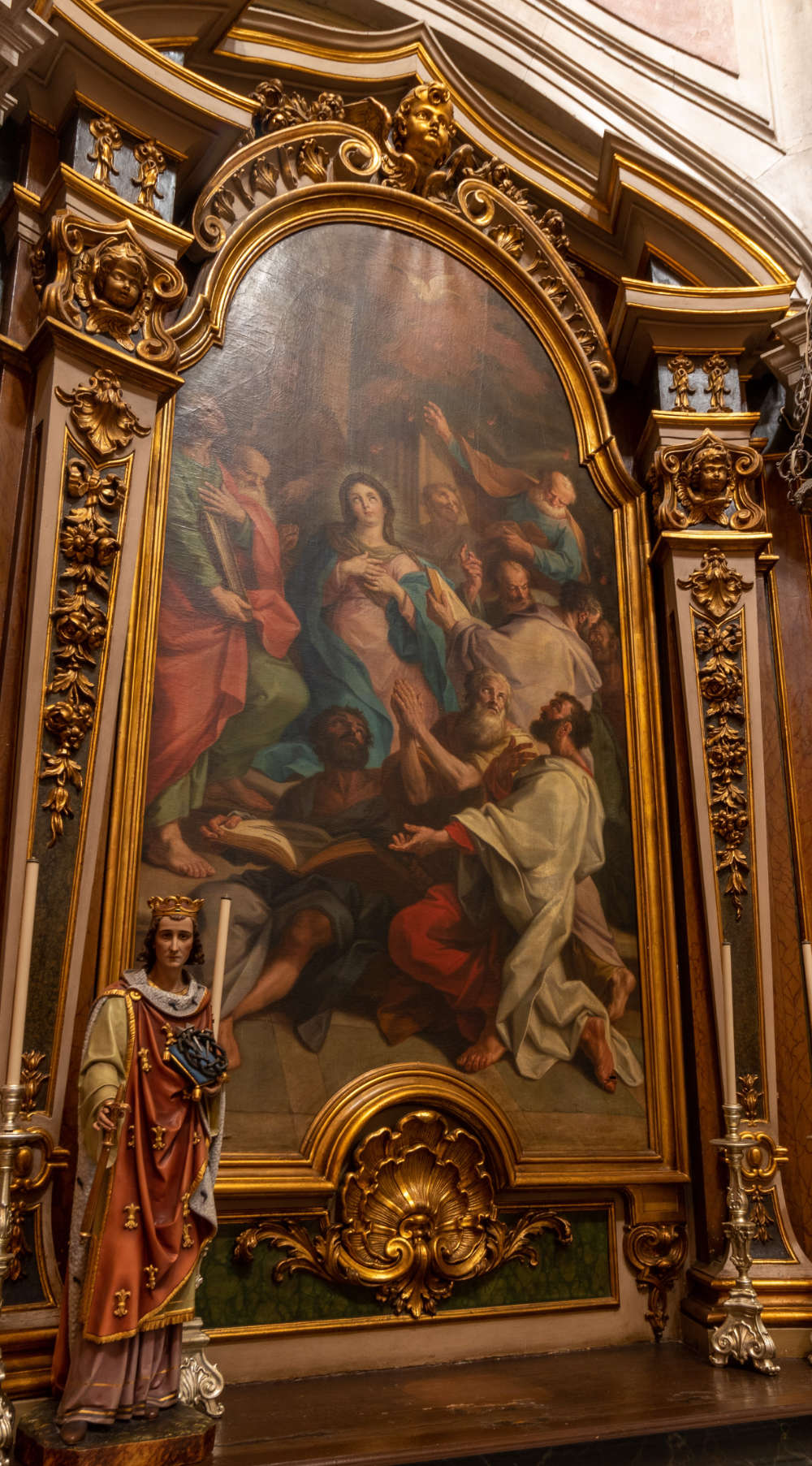

8. Pentecost
The altar is dedicated to Pentecost, the descent of the Holy Spirit, with a late-baroque altarpiece in gilded woodcarving (18th century). In this altarpiece, a painting by Pedro Alexandrino narrates the descent of the Holy Spirit on the Virgin Mary and the Apostles, on the day of Pentecost. At the top of the composition appears a dove, a symbol of the Holy Spirit, and seven tongues of fire, the gifts of the Spirit. In the painting, the figures of the Virgin and the three Apostles who hold the Gospels stand out. These are the evangelists John, Mark, and Matthew. We highlight on this altar the image of Saint Louis IX, King of France (1214–1270), patron of the Third Order of Saint Francis.
9. Calvary
This 18th-century altar is dedicated to the Passion and Death of Christ on Calvary, with a late-baroque altarpiece in gilded carving. At the centre of the painting by Pedro Alexandrino, we can contemplate the scene of the Calvary. Jesus Crucified has on his right, weeping beside the Cross, Mary, his mother, here called the Virgin of Sorrows, and on his left, Saint John, the beloved disciple. At the foot of the Cross, Mary Magdalene weeps over the death of Christ. The statue of Queen Saint Elizabeth of Hungary (1202–1231), patroness of the Third Order of Saint Francis, and the aunt of Queen Saint Isabel of Portugal, is also a remarkable piece on the altar.


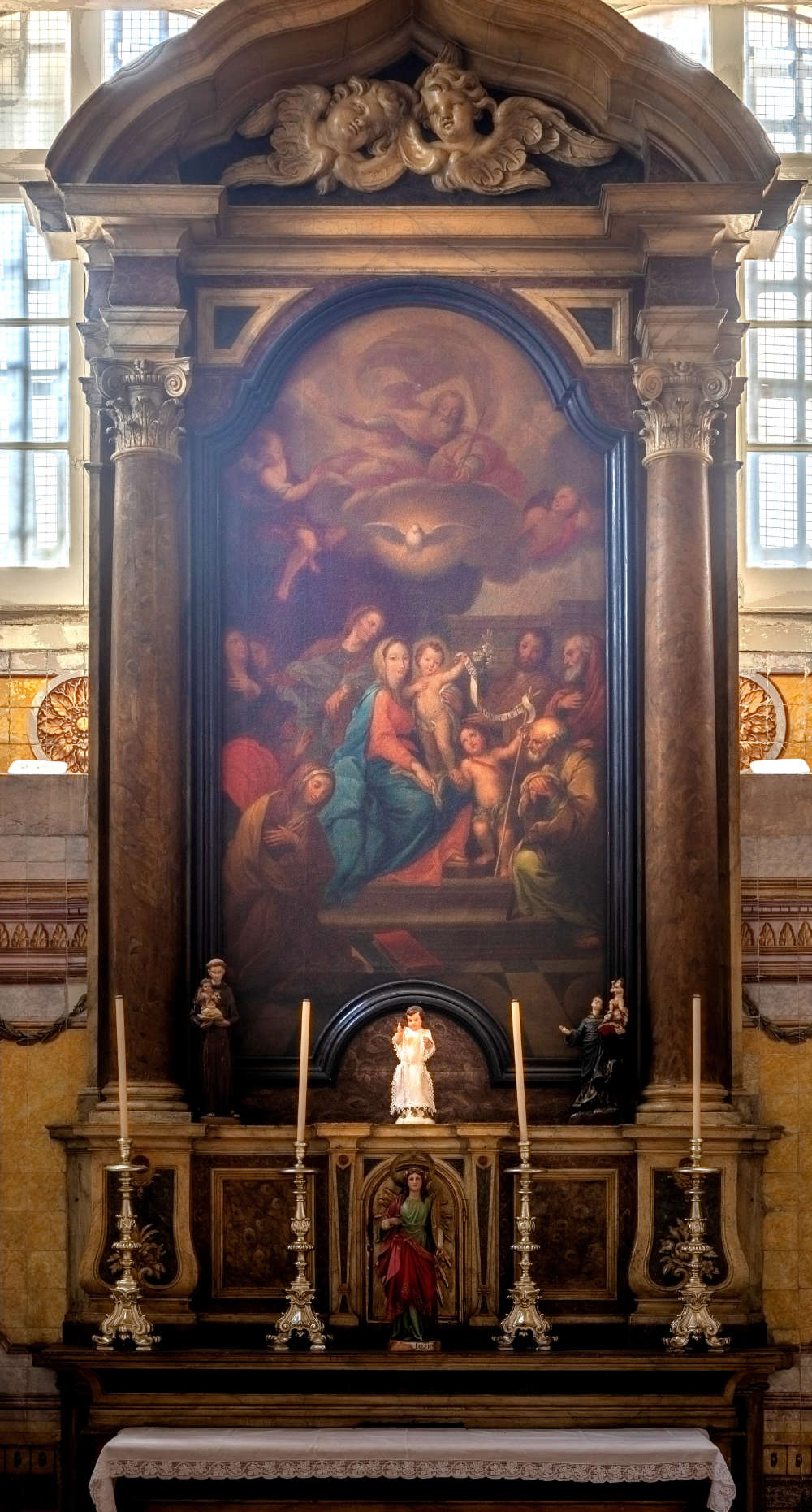

10. Holy Family (Sacristy)
The sacristy altar has significant historical relevance to this church, as it was in front of it that, on November 4, 1775, 20 years after the earthquake, a solemn Te Deum was celebrated in thanksgiving for the reconstruction of the church. The altarpiece features a Holy Family by Bruno José do Vale, painted in 1775. For this work, the painter uses as a model the Holy Family commissioned by D. João V to Masucci for the Basilica of Mafra. In addition to the Virgin Mary with the Child Jesus on her lap, the figure of John the Baptist, also a child, stands out, who, on the phylactery that hangs from the cross he holds, announces the presence of the Lamb of God (Ecce Agnus Dei). Present in the scene, in the background, are his parents, Elizabeth, Mary’s cousin, and Zechariah. On the left side, still in the background, appears the beloved disciple, the Evangelist Saint John. In the foreground, we see Saint Anne and Saint Joachim, parents of Mary and grandparents of Jesus. The image is surmounted by representations of God the Father and the Holy Spirit, revealed by the dove. The verticality of the compositional line, which encloses the three Persons of the Holy Trinity, links this existence on two levels – the divine and the earthly.
11. St. António’s Chapel
It is here that we find the heart of this church and the reason it exists: the Chapel of Santo António, formerly known as the Crypt or Room of Santo António. It is all that is left of the early Manueline Basilica, which marks the birthplace of this Lisbon saint and was destroyed in the earthquake of 1755. The Pope, Saint John Paul II, paid a visit to this chapel in 1982. It is a simple space conducive to prayer in front of the relic that is found here. Traditionally, young people who intend to get married visit this church, pray, and leave flowers for Santo António, the patron saint of lovers.
Here we venerate the Relic which, according to the Bull, is a fragment of the bone of the Saint’s face. From this space, going up on the right side, we access the Holy Door where, outside, a beautiful tombstone stands out, where we can read the brief of Pope Pius VI, dated 1782, “granting plenary indulgence to every person who confessed and received Communion and visits this house Church of the glorious St Anthony on any day of the year”.






